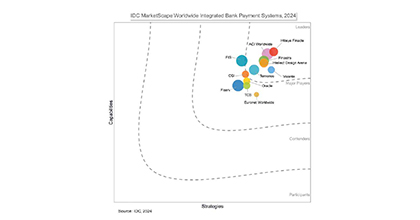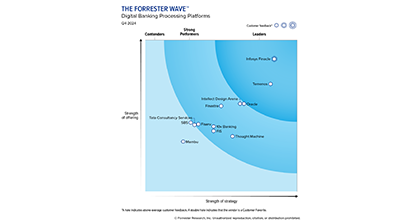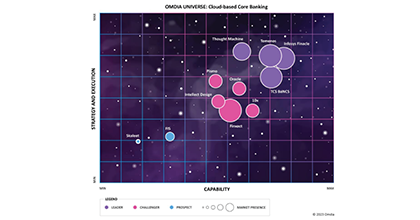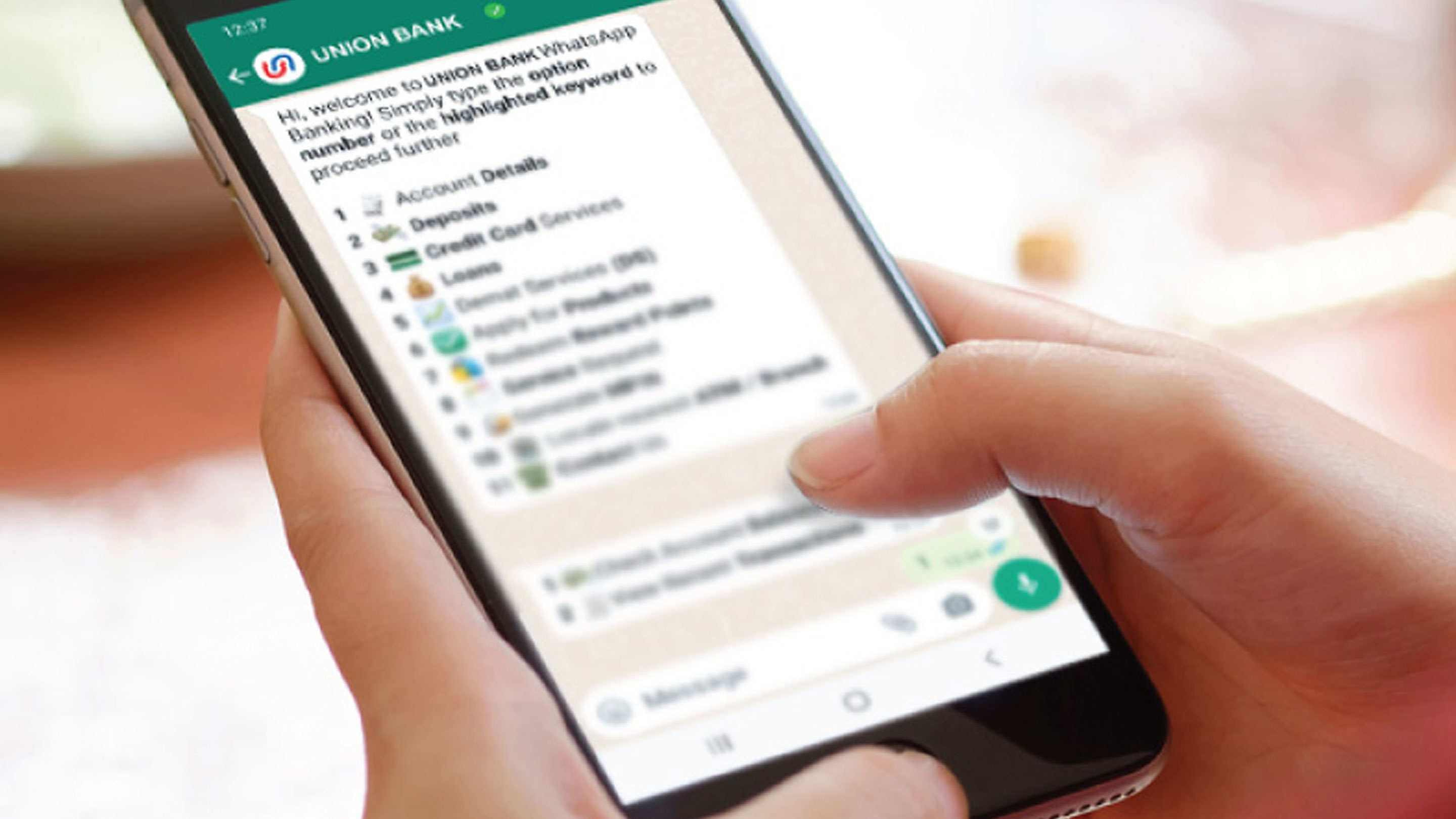Featured Content
-
![]() Quantum Computing: As the Future Awaits, The Strides Are DefinitiveQuantum computing is no longer confined to theory or the edges of experimental science - it is rapidly advancing toward practical impact.Read More
Quantum Computing: As the Future Awaits, The Strides Are DefinitiveQuantum computing is no longer confined to theory or the edges of experimental science - it is rapidly advancing toward practical impact.Read More -
![IDC IDC]() IDC MarketScape: Worldwide Integrated Bank PaymentFinacle Payments is an enterprise payments services system that manages end-to-end payments across instrument types, payment schemes, transaction types, customeRead More
IDC MarketScape: Worldwide Integrated Bank PaymentFinacle Payments is an enterprise payments services system that manages end-to-end payments across instrument types, payment schemes, transaction types, customeRead More -
![]() Supply Chain FinanceToday, as businesses seek to make their ecosystems more resilient, Supply Chain Finance (SCF) has emerged as a powerful lever for banks and financial institutions to support clients, while unlocking new revenue streams.Read More
Supply Chain FinanceToday, as businesses seek to make their ecosystems more resilient, Supply Chain Finance (SCF) has emerged as a powerful lever for banks and financial institutions to support clients, while unlocking new revenue streams.Read More
Featured Content
-
![]() The Future of Core Banking: Business and Technology EvolutionOur point of view paper, “The Future of Core Banking: Business and Technology Evolution”, serves as a candid and forward-looking benchmark of your institution’s readiness—and a strategic playbook for core modernization.Read More
The Future of Core Banking: Business and Technology EvolutionOur point of view paper, “The Future of Core Banking: Business and Technology Evolution”, serves as a candid and forward-looking benchmark of your institution’s readiness—and a strategic playbook for core modernization.Read More -
![The Forrester Wave The Forrester Wave]() Forrester Wave Digital Banking, Q4 2024Finacle is best suited for large retail, SMB, and corporate banks who seek a modern, comprehensive, innovative platform with superior support.Read More
Forrester Wave Digital Banking, Q4 2024Finacle is best suited for large retail, SMB, and corporate banks who seek a modern, comprehensive, innovative platform with superior support.Read More -
![]() Driving Comprehensive Revenue ManagementDiscover why revenue management must evolve into a comprehensive, strategic capability. Decode a blueprint to overcome challenges and unlock sustainable monetization.Read More
Driving Comprehensive Revenue ManagementDiscover why revenue management must evolve into a comprehensive, strategic capability. Decode a blueprint to overcome challenges and unlock sustainable monetization.Read More
Featured Content
-
![]() Shaping Banking’s Next: Banking Technology Trends for 2025 and BeyondThe banking industry has been balancing disruption and opportunity for several years now, and the pace of change shows no signs of slowing as we move into 2025 and beyond.Read More
Shaping Banking’s Next: Banking Technology Trends for 2025 and BeyondThe banking industry has been balancing disruption and opportunity for several years now, and the pace of change shows no signs of slowing as we move into 2025 and beyond.Read More -
![]() Virtual Accounts 2.0: Surpass Conventional Cash Management and Unlock Next-Gen PossibilitiesVirtual Account Management was a groundbreaking shift in the banking landscape, revolutionising use cases like cash concentration, pooling, centralised treasury management, and in-house banking (POBO, ROBO, COBO)Read More
Virtual Accounts 2.0: Surpass Conventional Cash Management and Unlock Next-Gen PossibilitiesVirtual Account Management was a groundbreaking shift in the banking landscape, revolutionising use cases like cash concentration, pooling, centralised treasury management, and in-house banking (POBO, ROBO, COBO)Read More -
![]() Unlocking Hybrid CloudAs banks push forward with their digital transformation agenda, cloud serves as a pivotal enabler. Each bank, at varying stages of adoption, crafts its unique path, dictated by context, regulations, and risk appetite.Read More
Unlocking Hybrid CloudAs banks push forward with their digital transformation agenda, cloud serves as a pivotal enabler. Each bank, at varying stages of adoption, crafts its unique path, dictated by context, regulations, and risk appetite.Read More
Featured Content
-
![]() Banking on CloudThis report from Infosys Finacle delves into the need for accelerating cloud adoption, highlights the current state of the industry, and puts forth key recommenRead More
Banking on CloudThis report from Infosys Finacle delves into the need for accelerating cloud adoption, highlights the current state of the industry, and puts forth key recommenRead More -
![]() Omdia Universe | Cloud-based Core BankingIn the report, Omdia highlights the following key capabilities of leading cloud-based core banking providers:Read more
Omdia Universe | Cloud-based Core BankingIn the report, Omdia highlights the following key capabilities of leading cloud-based core banking providers:Read more
Featured Content
-
![]() Emirates NBDEmirates NBD consolidates its operations on a single version for scalability, agility, and standardization.Read More
Emirates NBDEmirates NBD consolidates its operations on a single version for scalability, agility, and standardization.Read More -
![]() A Global Top 5 BankDiscover how a global top 5 bank headquartered in the US accelerated payments transformation.Read More
A Global Top 5 BankDiscover how a global top 5 bank headquartered in the US accelerated payments transformation.Read More -
![]() Union Bank of IndiaUnion Bank of India launches Union Virtual Connect (UVConn) by leveraging WhatsApp to provide customers personalized banking services.Read More
Union Bank of IndiaUnion Bank of India launches Union Virtual Connect (UVConn) by leveraging WhatsApp to provide customers personalized banking services.Read More

Blockchain in Banking: Moving From Hype to Reality in 2017
Blogs
- Blockchain has been a topic of discussion ever since its inception in 2009 as the underlying technology for Bitcoin. The industry has seen intense debate and deliberation on the potential of blockchain, with many claiming, that it is as foundational, as the internet. Some banks state that they have moved past deliberation stage on blockchain, and are starting proof of concepts around this technology.
- As with any disruptive technology, there are questions in its wake – where do we stand as an industry with respect to blockchain technology after eight years? How much of blockchain is still hype and how much of it is now a reality? What is the way forward with this technology? To find answers to these questions, Infosys Finacle partnered with Let’s Talk Payments (LTP) on a research surveying more than 100 business and technology leaders from over 75 financial institutions.
- When it came to investing in this technology, 50% of the banks surveyed have already invested in blockchain technology, or will do so in 2017. In terms of degrees of adoption of blockchain technology, 15% of the banks are innovators, 35% are early followers. The rest (50%) that are waiting for the technology to mature, are late adopters. While average investment in blockchain projects in 2017 is expected to be $1 million, the innovators have already invested funds over $10 million. These investments not only support blockchain initiatives, but also explore use cases beyond the traditional realm of cross-border remittances, clearing, and settlement.
- Banks are now moving towards commercial adoption, and one in every three banks expects to see commercial adoption by 2018. While 50% of the surveyed banks expected to see commercial adoption only by 2020. Cross-border remittances, digital identity management, clearing and settlement, letter of credit processes, and syndication of loans are the most likely candidates for commercial adoption.
- Based on preferences for blockchain adoption, private permissioned blockchain is the popular choice with a whopping 69% of banks in its favor. Partnerships come in second as the next preference for blockchain adoption. About 50% of the banks are either working with a fintech startup or technology company to augment their blockchain capabilities, while another 30% are opting for the consortium model.
- A section of the survey also dealt with the banks’ expectations from blockchain for the industry. Based on the responses from the surveyed banks, it can be concluded, that the banking industry should see blockchain projects going into production in 2017 itself – albeit in a small way and for simple use-cases. It is expected that blockchain adoption will start with the most convenient areas, and then it will slowly progress towards transformative and complicated areas. The phased approach towards blockchain implementation is preferred because banks and financial Institutions want to create networks with already established partners in the industry; partners that are already aligned with their process, or internally.
- The first use cases that will see the light of the day in the next couple of years are intra bank use cases, or use cases, which can betested with incumbent inter-bank relationships. These are most likely to be in areas such as digital identification and cross border payments. Furthermore, the next 2-5 years will see more of inter-bank use cases, and cases that involve regulators – such as trade finance. Beyond 5 years, there will be widespread adoption of this technology in the financial services and banking ecosystem. Progressively, by 2020, the adoption of blockchain based applications will increase in several businesses. The larger part of the ecosystem adopting this technology will include players like the government, corporations from other industries, and possibly even end consumers.
- Based on the findings of the report, it is no longer a question of whether banks will adopt blockchain; but more of whenand how they will implement it. This research reaffirms our belief that banks must experiment with the technology in a controlled environment to discover the value it can bring in their context and based on the outcomes of the experiments commit towards production deployments. We hope banks will find this report useful while crafting their organization’s blockchain adoption strategy.
About the Author

Pramod_kamath01

Download the Latest Report
The Future of Core Banking: Business and Technology Evolution
Let’s Discuss
Fill out the form below and we will get back to you shortly. Alternately, you can also contact our regional offices


Solutions
Spotlight
Better Banking
Technology
Company
App Center
Client Stories
©2025 -Edgeverve Systems Limited | All rights reserved
















